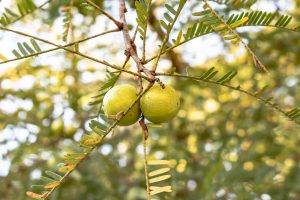Introduction
Cornstarch is a staple in kitchens around the globe, recognized for its power to transform sauces and gravies from watery to wonderfully thick. But beyond its role as a culinary hero, have you ever paused to ponder, “Can you actually eat cornstarch?” Let’s unravel this mystery, embarking on a journey through its uses, health implications, and much more.
Understanding Cornstarch
What is Cornstarch?
Derived from the endosperm of corn kernels, cornstarch is a fine, white powder that’s become indispensable in cooking and baking. Its journey from corn to your kitchen involves a process of milling and refining, resulting in a pure starch that’s both flavorless and highly absorbent.
Nutritional Profile of Cornstarch
Nutritionally, cornstarch is almost entirely carbohydrates, with a minimal presence of protein and fat. It’s also devoid of vitamins and minerals, making it a source of empty calories. Yet, its role in food preparation is invaluable.
The Culinary Uses of Cornstarch
- Thickening Agent in Cooking Cornstarch’s superpower lies in its ability to thicken. When mixed with cold water and added to a hot liquid, it undergoes a transformation, turning the liquid into a thick, glossy sauce.
- Baking Applications In baking, cornstarch is often used to soften the harsh proteins of flour, making cakes and cookies tender. It’s also a key ingredient in shortbread, providing that classic crumbly texture.
- Making Crispy Coatings For fans of crispy fried foods, a cornstarch batter can create an irresistibly light and crunchy exterior on everything from chicken to vegetables.
Health Considerations When Eating Cornstarch
- Benefits of Cornstarch Though not nutrient-dense, cornstarch is gluten-free, making it a fantastic thickening alternative for those with gluten sensitivities or celiac disease.
- Potential Health Risks However, its high glycemic index means it can spike blood sugar levels, posing a risk for individuals with diabetes or insulin resistance. Consuming large amounts can also lead to weight gain and other health issues.
- Dietary Restrictions and Cornstarch Always consider any dietary restrictions or allergies when incorporating cornstarch into your diet, ensuring it aligns with your health needs.
Cornstarch Beyond the Kitchen
- Industrial Uses Cornstarch isn’t just for cooking; it’s also used in the manufacturing of biodegradable plastics, fabrics, and adhesives.
- In Home Remedies Interestingly, it’s found its way into home remedies, acting as a soothing agent for skin irritations and a deodorizer for shoes.
How to Consume Cornstarch Safely
- Recommended Amounts While cornstarch is safe for consumption, moderation is key. Stick to the amounts typically used in recipes to avoid any negative health impacts.
- Preparing Cornstarch for Consumption Always cook or bake cornstarch as part of a recipe. Consuming it raw is not recommended due to potential bacteria and its impact on your digestive system.
Alternative Uses of Cornstarch in Daily Life
- Cleaning Agent Beyond cooking, cornstarch can shine as a natural cleaning agent, tackling greasy stains and polishing silverware.
- Personal Care Products It’s also a star ingredient in many personal care products, offering a natural alternative to talc in powders.
Substitutes for Cornstarch
- Other Thickening Agents If you’re out of cornstarch or looking for a healthier option, alternatives like arrowroot powder, tapioca starch, or even ground flaxseeds can serve similar purposes in recipes.
- Healthy Alternatives For those mindful of health, choosing thickeners with additional nutritional benefits, such as fiber-rich flaxseeds, can offer more than just thickening properties.
Conclusion
In the culinary world, cornstarch is a versatile ingredient with a wide range of applications, from thickening sauces to creating crispy coatings. While it’s safe to eat when cooked and used in moderation, it’s important to be mindful of its nutritional profile and potential health implications. Whether you’re whipping up a storm in the kitchen or exploring its alternative uses, cornstarch is undoubtedly a household staple with much to offer.
FAQs
- What happens if you eat cornstarch raw?
Eating cornstarch raw can lead to digestive discomfort and is not recommended due to potential bacteria. - Can cornstarch affect your digestion?
Yes, consuming large amounts of cornstarch can disrupt digestion and may lead to constipation or blockages. - Is cornstarch good for weight loss?
Given its high carbohydrate content and lack of nutrients, cornstarch is not ideal for weight loss diets. - Can cornstarch be replaced in recipes?
Absolutely, there are several alternatives like arrowroot powder and tapioca starch that can substitute for cornstarch in recipes. - How does cornstarch compare to flour as a thickening agent?
Cornstarch is a more potent thickener than flour, requiring less quantity to achieve the same thickening effect.








